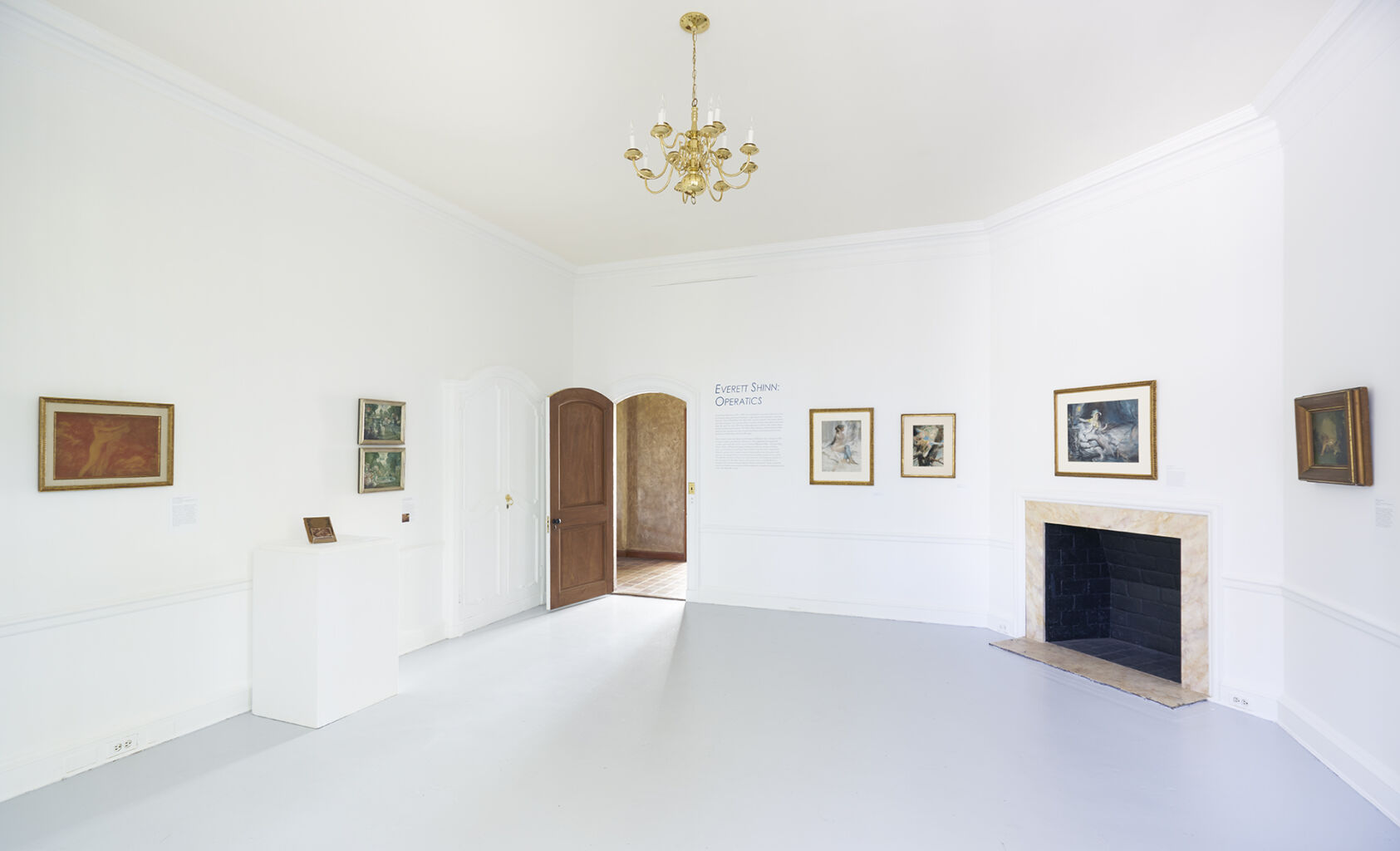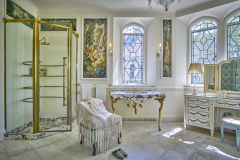Everett Shinn: Operatics
May 12 – November 14, 2021
On May 12 Planting Fields Foundation was pleased to present its first exhibition of 2021, Everett Shinn: Operatics. On view through November 14, the exhibition presented paintings, drawings, decorative murals, furnishings, objects, and musical instruments by Everett Shinn (1876-1953) from the Foundation’s collection, in addition to works from local public and private collections, some of which were on view to the public for the first time. The exhibition tours included access inside the Tea House in the Italian Garden which was last open to the public in 2014.
An exhibition catalogue is available in the Gift Shop.

Photo of Everett Shinn by Zaida Ben-Yusuf
c. 1896, Archives of American Art

Act I: Second floor gallery

Act II: Mai Coe’s Dressing Room

Act III: The Reception Room in Coe Hall

Act IV: 1915 Tea House, The Italian Garden
Organized in four “acts” Everett Shinn: Operatics opened with Act I in Coe Hall where visitors were introduced to the artist and his career in the second-floor gallery through nine paintings and works on paper made between 1908 and 1933. Act II followed in Mai Coe’s dressing room, featuring a collection of murals commissioned from Shinn by Planting Fields creators, W.R. and Mai Coe, who built a legacy of artistic patronage by supporting modern artists of their time. Act III in the Reception Room developed the story of Shinn’s decorative style through the Steinway piano he painted for Broadway playwright Clyde Fitch in 1906, along with two small painted studies for his murals in the Stuyvesant Theatre, commissioned by another Broadway producer and playwright, David Belasco, in 1907. The theatricality of Shinn’s work culminated in Act IV in the 1915 Teahouse, one of Planting Fields’s architectural treasures, where visitors encountered a unified ensemble of the artist’s murals, furnishings, and objects in a space designed in its totality by Shinn for Mai Coe.
A member of The Eight – a group of American modernists at the turn of the century dedicated to artistic individuality and a philosophical commitment to creativity – Everett Shinn is best known for his paintings of gritty scenes of urban poor and vaudeville stages. While the metropolitan vision of The Eight and what has become known as the Ashcan School helped to usher in the Progressive era, Shinn’s artistic oeuvre was more complex and varied than the traditional narrative of American modernism has allowed. A lover of theater, music, and performance of all kinds, Shinn embraced the decorative alongside the debased, and throughout his long career he created works on paper, canvas, furnishings, architecture, even pianos and stage sets, that engaged with a raucous decorative aesthetic often termed Rococo revival.




